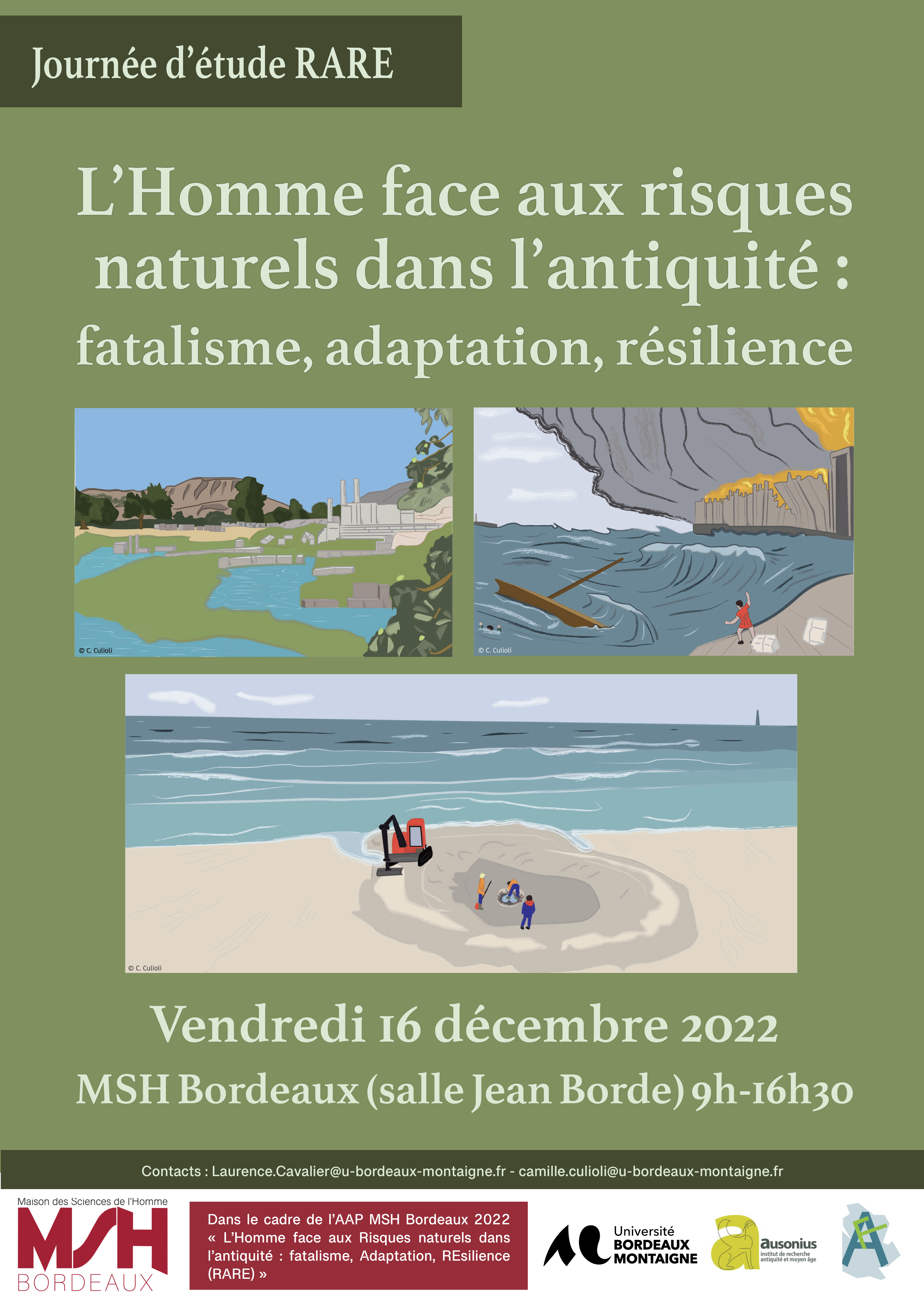
study day : Man faced with natural risks in antiquity: fatalism, adaptation, resilience
MSH Bordeaux, December 16, 2022
“Building a port and maintaining it: a risky project.
The example of the Narbonnais port system » Corinne Sanchez, researcher, CNRS, Paul Valéry Montpellier 3 University, UMR 5140, Archeology of Mediterranean Societies Laboratory, corinne.sanchez[@]cnrs.fr
Keywords: Narbonne, siltation, defluviation, port system, coastline
The creation of a port involves taking risks (costly investments, climatic hazards, environmental instability, etc.). Narbonne, the provincial capital, needed to have secure places of exchange for its economic development that were adapted to a restrictive environmental context. A dozen kilometers from the sea, the city was connected to a vast lagoon complex by a navigable river route. The conditions for establishing a port on this sandy coastline may seem unfavorable with a wind that blows at least 270 days a year, a capricious river which wanders into a flood plain and ponds which fill up with sedimentary inputs. However, this port was one of the most important in Antiquity and remained active until the Middle Ages. Recent excavations highlight a constant adaptation. Some port areas were quickly abandoned while others lasted remarkably long. The constructive choices were the result of accumulated experiences. Thus, the Nautique landing stage was condemned as soon as the quays were built which precipitated its siltation. The mouth of the river was then the subject of major works to control deviations and secure loading and unloading operations. This development, designed to accelerate the flow of water and thus expel sand, has been maintained for five centuries. The choices made to build, maintain and repair these works will be presented.
